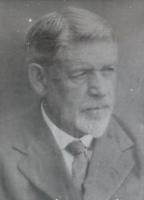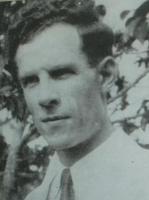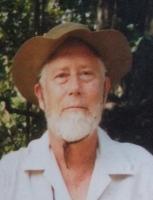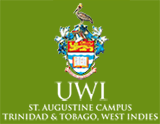History of the Collections
ICTA Years
The collections held by the Zoology Museum date back to the 1920s. Before The University of the West Indies (UWI) existed the St. Augustine campus was home to the West Indies Agricultural College which in 1924 became the Imperial College of Tropical Agriculture (ICTA). The early collection was basically a repository for researchers investigating animal species of agricultural importance and as a resource for teaching. Insects formed the bulk of the specimens and consisted of pest and beneficial species associated with the various crops under study – cocoa, maize, coffee, cotton, tobacco, citrus, pineapple and banana to name a few. Many of these were collected by the Professor of Entomology and Commissioner of Agriculture Henry Arthur Ballou, a prolific author on many aspects of entomology throughout the Caribbean and beyond.
 Prof. H.A. Ballou
Prof. H.A. Ballou
In 1933 Martin Adamson was appointed Senior Lecturer and Head of the Department of Entomology, he started to collect a wider range of animals including marine invertebrates such as echinoderms and crustaceans and also terrestrial animals such as beetles and amphibians. He had earned his undergraduate degree at The University of St. Andrew in his home country of Scotland and during his time at ICTA he gained his PhD from the University of California, he was with ICTA until his death in 1945.
 Prof. A.M. Adamson
Prof. A.M. Adamson
His successor, Professor Thomas W. Kirkpatrick, was Head of Department from 1946 to 1959. He expanded the reference collections further with a wider variety of insects. Around the same time his colleague Michael Emsley added in more non-pest insects as well as establishing a snake collection, some of the information from which he used to write his 1977 publication “Snakes and Trinidad and Tobago”. Unfortunately his original specimens have either disappeared or over time the labels have become disassociated from them as during a recent cataloguing of the reptiles none were recorded as being collected by Emsley.

UWI Years
From 1960 to 1964 the reptile collections were increased further due to the work of Professor Garth Underwood. He was a keen herpetologist who started his career at the University College of the West Indies in Jamaica before moving to Trinidad to become the Head of Department. He collected and studied reptiles from all over the Caribbean during his time at UWI, many of which are deposited in the collection. In recognition of his work the lizard Gymnophthalmus underwoodi was named after him. He presided over the department at a time when Zoology began to be taught separately from Agriculture and so a wider ranging teaching collection was required.

Professor Julian S. Kenny, who served as Head of Department from 1970 to 1990, collected widely but was particularly keen on amphibians and fish. He was author of “The Amphibia of Trinidad” in 1969 and went on to write many books and articles on all aspects of Trinidad and Tobago’s wildlife.

His successor, Professor Peter Bacon, also added a variety of specimens ranging from barnacles and molluscs, to turtles and plankton. Bacon had gained the first Zoology PhD from St. Augustine in 1969 and went on to conduct studies of Trinidad’s wetlands and the threatened leatherback turtle populations.
 Prof. P. Bacon
Prof. P. Bacon
Over the years many collectors have contributed to the museum, some have bequeathed items in their wills and some were collected as part of Masters or Doctoral studies. Examples include the shell collection of Sybil Atteck, one of Trinidad’s most famous and influential artists; the P. Thompson mollusc collection; freshwater decapods from Wayne Rostant and Dawn Phillip; marine decapods from Jan Stonley; fossils from Robert Kennedy; freshwater insect larvae and fossils from Mary Alkins-Koo; social insects from Christopher K. Starr and Alan W. Hook, freshwater fish from J. L. Price, J. Webster-King, J. Kenny and Dawn A.T. Phillip; marine fish from Robin W. Bruce; bats from F.M. Clarke; octocorals from Doon Ramsaroop; marine invertebrates from staff aboard the Research Vessels Oregon II and Discoverer and the Texaco collection of marine molluscs to name but a few.
One of the most colourful collections, both literally and in terms of the life and death of the donor, was the Sir Norman Lamont collection of Lepidoptera. Lamont was a Scottish Baronet with an estate in Trinidad who had served as a Governor of ICTA and was a prolific writer on many subjects. At the age of 79 he was gored by a bull and died of his wounds, his collection of local butterflies and moths was split between ICTA and the National Museum of Scotland in Edinburgh. His collection changed the sparse butterfly specimens into a beautiful and extensive display which rivals the famous Malcolm Barcant collection on display in the Angoustura Museum.
The UWI Zoology Museum
It was decided in the early 2000s that a full time zoology curator was required and the position was filled in 2010 by Mike G. Rutherford, previously a curator for Glasgow Museums in Scotland. Rutherford oversaw a programme of cataloguing, refurbishing and opening up of the museum to a wide range of visitors and he introduced the name UWI Zoology Museum or UWIZM. Thousands of specimens were catalogued with the help of technicians, trainees and interns with every specimen being given a new accession number and having its details recorded in the PastPerfect 5.0 database. He also introduced and organised an annual T&T Bioblitz event, partnering with many different organisations over the years. Personally he collected thousands of specimens, focusing mainly on the land snails but including marine invertebrtaes, reptiles and amphibians, birds, mammals, arthropods and other invertebrates. He also took an interest in processing specimens, producing skins and skeletons from many vertebrates. He left the museum in 2019 to return to Scotland.
National Collections
Three other collections have been added to the UWIZM in the last decade.
In 2012 CABI (Centre for Agriculture and Bioscience International) transferred their collection of approximately 60,000 insects to the care of the UWIZM.
Also in 2012 the CAREC (Caribbean Epidemiology Center) collections were moved to the UWIZM. This collection was largely made up of specimens collected in the 1950s and 60s by staff of the Trinidad Regional Virus Laboratory and consists of mammals, birds, reptiles, amphibians and various invertebrates.
In 2014 the National Museum and Art Gallery of Trinidad & Tobago transferred their off-display natural history specimens to the UWIZM. The specimens included insects, bird skins and bird eggs, mammals skins and bones, molluscs, reptiles, amphibians and fish.
Last updated 26 September 2019







